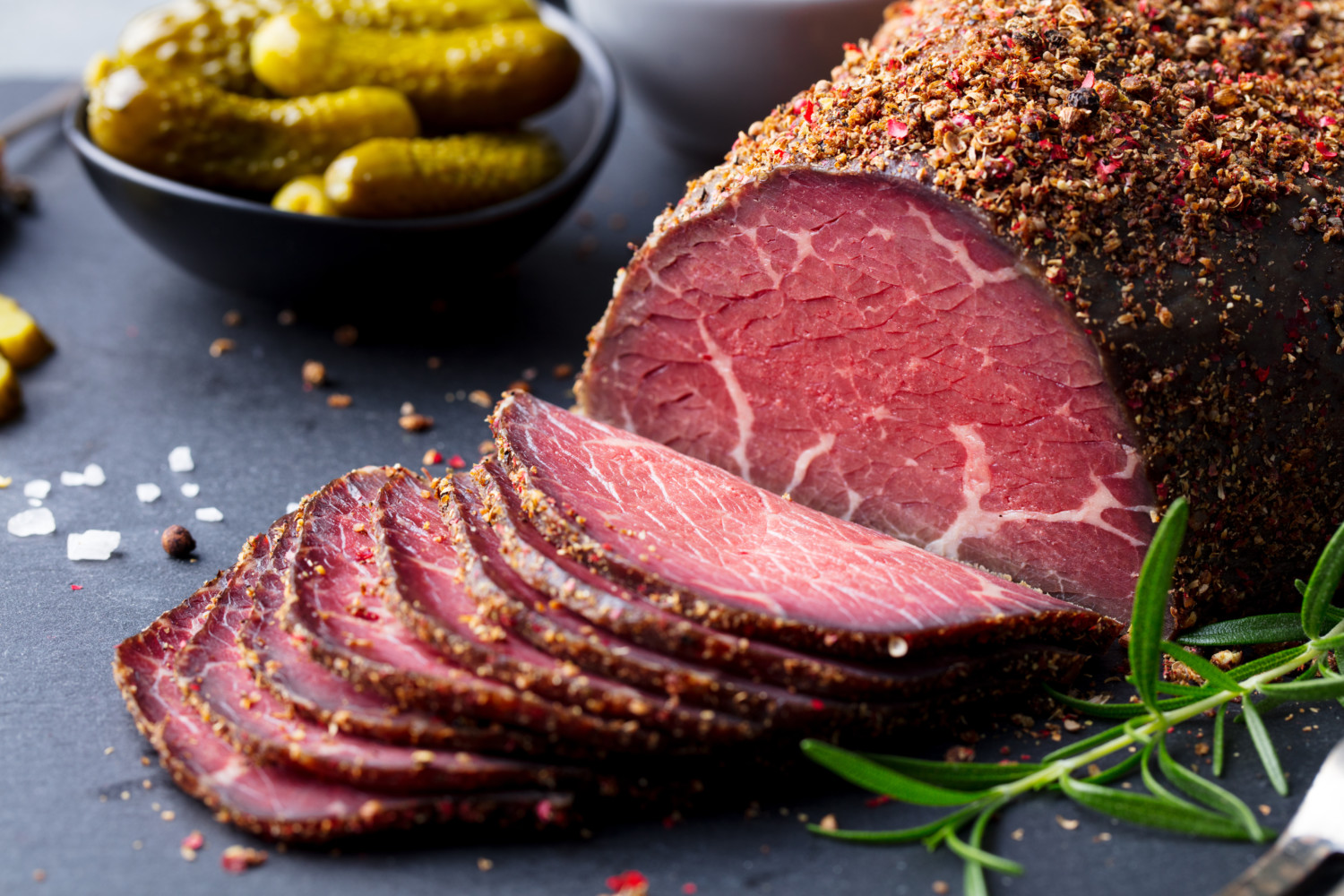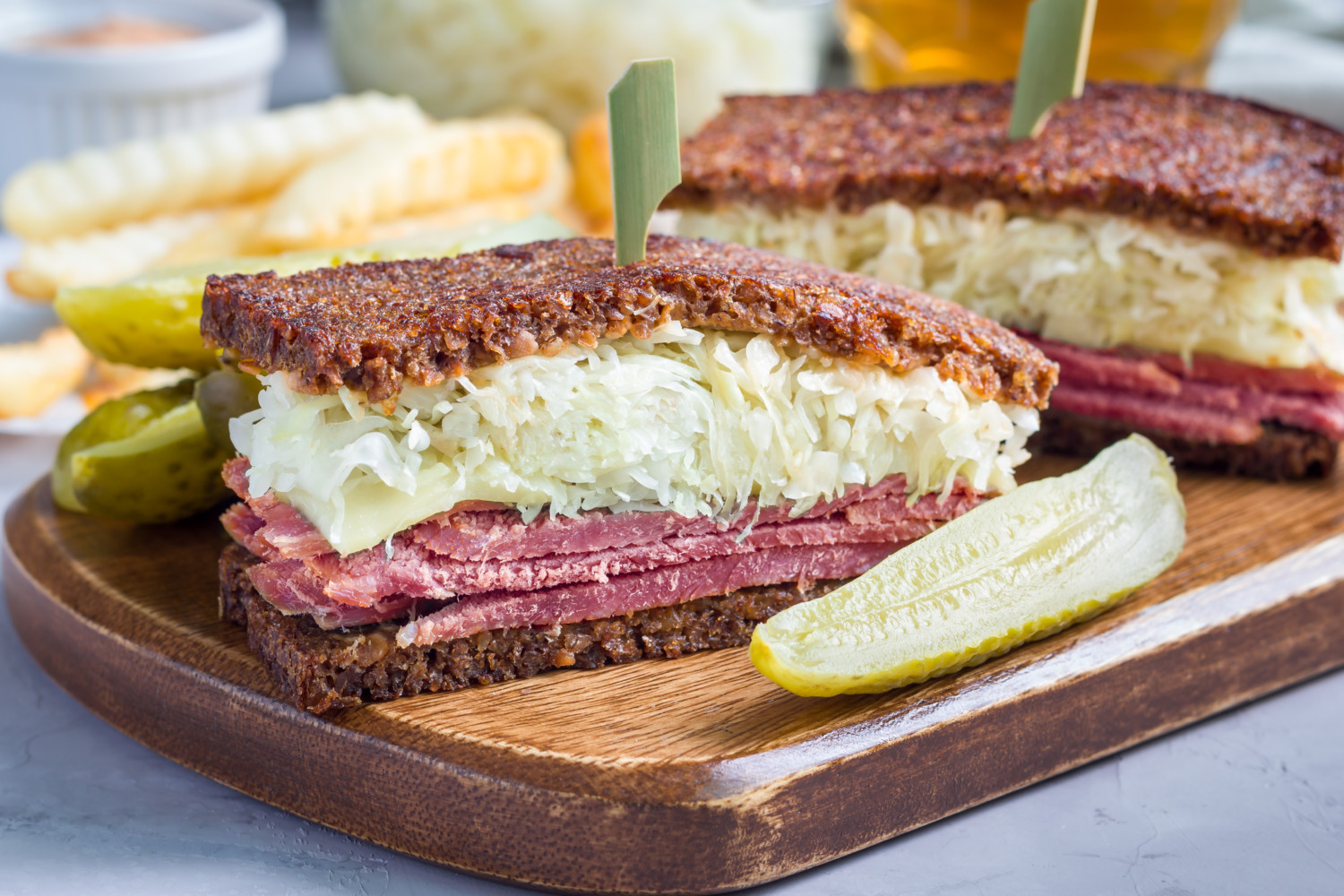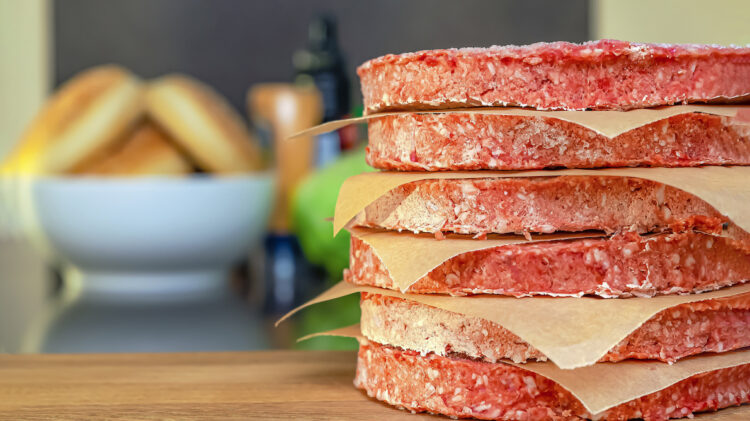Corned beef versus pastrami—what’s the difference?

Pop quiz: What type of meat fills a Reuben sandwich — corned beef or pastrami? Does it even matter? Have you ever wondered what the difference is between the two? (The answer is corned beef, by the way.) Often confused as the same thing, these two deli meats might look similar but they are indeed different.
When it comes to corned beef versus pastrami, both types of meat originally gained popularity because they’re easily preserved. Both meats also look similar and are brined for several days before slicing. You can eat corned beef or pastrami hot or cold — chef’s choice!
Corned Beef Vs. Pastrami
Differences between the two meats include their origins, cooking process, seasonings and how they’re served. So if you thought the only difference between corned beef versus pastrami was just how they’re sliced, follow along as we dive into what really sets these two staples apart.
What is Corned Beef?
You might have eaten corned beef at some point in your life during a St. Patrick’s Day celebration. It’s a traditional Irish-American dish that can be served in a Reuben sandwich, as corned beef hash or paired with cabbage. After the beef brisket is salt-cured, it’s either boiled, steamed or slow-cooked.
The name originates from the “corns” that are used when dry-curing large cuts of beef, which are big, coarse pellets of salt. The brine for this meat includes water, salt, garlic, bay leaf, black peppercorn, mustard seed, dried red pepper and coriander. Other than what’s inside the brine, it’s not seasoned prior to cooking.
The leaner flat cut of brisket is usually easier to slice. If corned beef isn’t used in a sandwich, it’s usually served in thick slices with cabbage, carrots and potatoes. The texture is firmer, giving a balanced, meaty flavor.
How is Pastrami Different?
It’s believed that pastrami’s origins extend back to Romania or Turkey. The cut of beef used in pastrami typically comes from the cow’s navel or deckle areas. Both are relatively fatty spots that help the meat hold up well during the long cooking process. Either way, pastrami is brined in a mixture seasoned with a dry mix of salt, sugar, cloves, fill, juniper berries and bay leaves. Afterward, it’s rubbed with a combination of fennel, mustard seeds, brown sugar, garlic, coriander and black peppercorns, which create its dark, flavorful crust. (Side note: Pastrami rub can be used to enhance chicken, steak or other veggies.) The meat is then smoked, steamed and sliced. It’s more tender than its corned beef cousin, with a smokier, saltier flavor.
How To Make Corned Beef and Pastrami Sandwiches
Starting with corned beef, the beloved Reuben sandwich typically consists of corned beef, sauerkraut and Russian or Thousand Island dressing served on rye or marbled bread. For an added touch, you can warm it in the toaster oven, open-faced with a slice of melted cheese.
For a classic New York style pastrami sandwich you’ll have to first thinly slice your pastrami. Next, layer your pastrami on top of your rye bread and add a smattering of coleslaw, yellow mustard, and garnish with an obligatory pickle.
Mmm….are you hungry yet? We are! Which one of these classic deli meats do you prefer?








